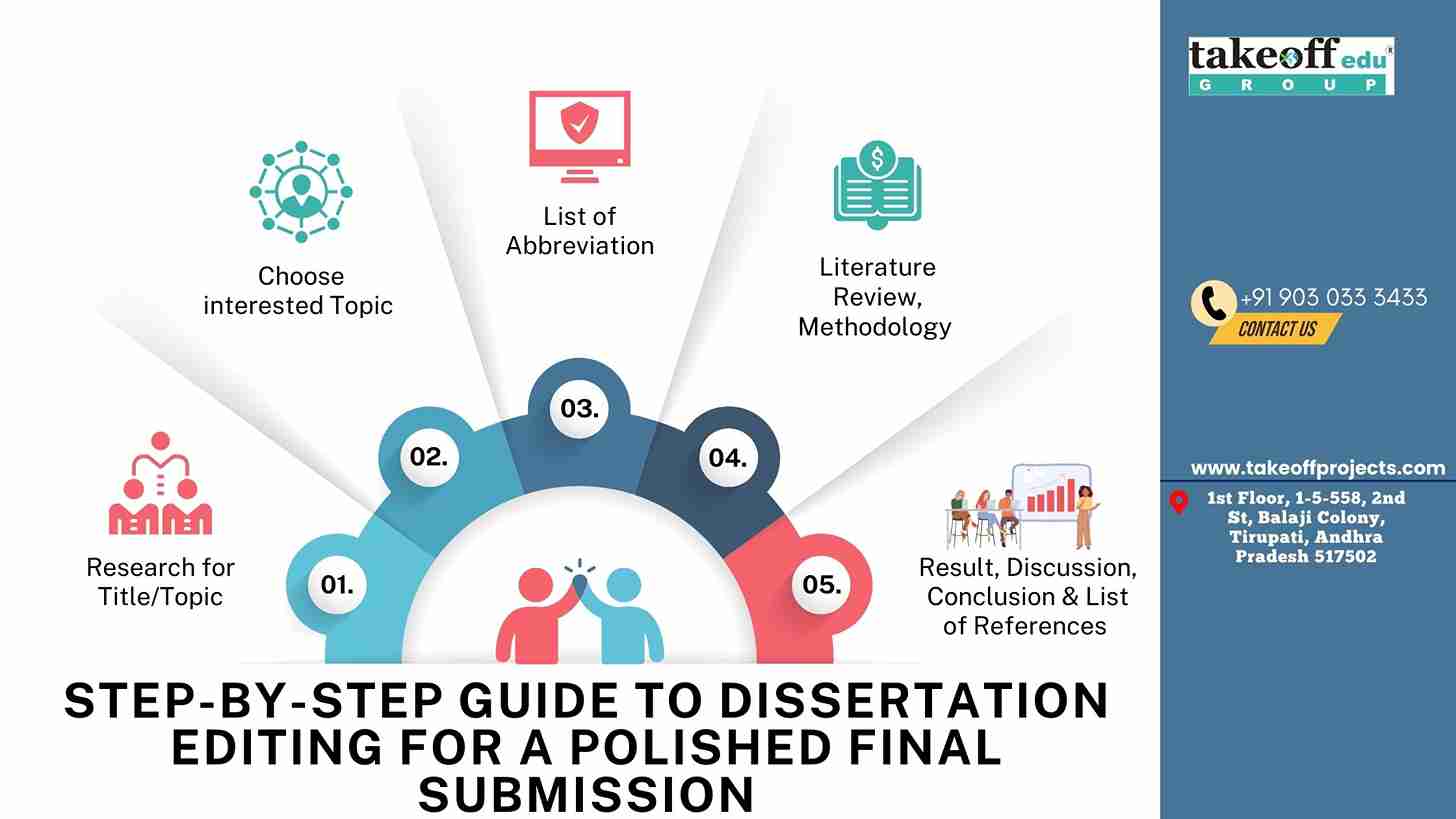Organizations as well as researchers depend on data analysis in today's information to find meaningful insights. Two fundamental approaches qualitative and quantitative analysis play a crucial role in decision-making, problem-solving, and strategic planning. Insights about data differences along with applications and advantages in data interpretation will result in enhanced effectiveness in data utilization.
What is Qualitative Analysis?
When analyzing non-numerical data qualitative research methods reveal underlying patterns in human behaviours while identifying thematic elements. The methodology provides extensive perceptual and motivation-based insights for social science research methodologies and market research studies and user experience measurement.
Key Characteristics:
• Subjective Nature: Relies on interpretation rather than numerical data.
• Data Collection Methods: Data collection methods include both interviews along with focus groups as well as open-ended surveys and observations.
• Outcome: Research involving descriptive analysis reveals deep understanding about causal processes. To uncover cultural or social behaviors researchers make exploratory investigations and researchers rely heavily on data analysis to extract meaningful insights. Two fundamental approaches qualitative and quantitative analysis play a crucial role in decision-making, problem-solving, and strategic planning. Understanding their differences, applications, and advantages can significantly enhance data interpretation and utilization.
What is Qualitative Analysis?
Researchers utilize qualitative analysis techniques to study unquantifiable data types and identify crucial fundamental relationships and behavioral motifs. The method serves scientific fields of social sciences and market research and user experience studies to provide in-depth understanding of human perceptions and motivations.
Key Characteristics:
• Subjective Nature: Relies on interpretation rather than numerical data.
• Data Collection Methods: Includes interviews, focus groups, open-ended surveys, and observations.
• Outcome: Provides in-depth understanding and context to a phenomenon.
Applications:
• Understanding customer emotions and preferences.
• Analyzing open-ended survey responses.
• Exploring cultural or social behaviors.
Understanding Qualitative Data
We access understanding of human conduct through the welcoming description found within qualitative data. The collection of nuanced subjective data differs from the numerical data collection approach of quantitative research. Human experiences and emotions together with intellectual processes and environmental interactions create qualitative data. Research teams obtain qualitative data using methods that combine interviews with focus groups as well as surveys alongside observational studies. The method reveals both motivation factors behind human conduct and emotional responses to matters and environmental engagement behaviors. In all industries quantitative information stays essential for professionals who want to enhance applications and reinvent hospital stay experiences.
What is Quantitative Analysis?
Quantitative analysis handles numerical data by enabling researchers to perform statistical measurements which create comparable references. This type of analysis appears daily in scientific research along with its financial applications and business analytics and engineering applications.
Key Characteristics:
• Objective Nature: Focuses on measurable, numerical data.
• Data Collection Methods: Experiments combine with closed-ended questionnaire surveys and database measurement processes.
• Outcome: The application of statistical methods leads to the detection of meaningful patterns combined with trend identification and data correlation discovery.
Understanding Qualitative Data
Through descriptive qualitative data we uncover insights into human behaviour. Quantitative research uses numeric data collection methods which differ fundamentally from obtaining subjectively rich data points. Quantitative data results from how people interact emotionally with their environment and intellectually. Research groups extract qualitative information by utilizing interview procedures blended with focus groups while also using survey methods and observational study practices. Herbal methods enable experts to discover motivation roots for human actions and emotional reactions alongside environmental engagement behaviours. Quantitative data plays an essential role within all industries for experts who need to improve operational systems while creating novel hospital stay solutions.
What is Quantitative Analysis?
Through quantitative analysis research teams can generate comparable references by performing statistical measures on numerical data. Scientific research and financial systems and business analytics as well as engineering applications present this analysis every day.
Key Characteristics:
• Objective Nature: Focuses on measurable, numerical data.
• Data Collection Methods: Researchers align experiments with database measurement processes and closed-ended questionnaire surveys.
• Outcome: Statistical analysis methods combine to reveal important patterns and provide both trend detection and data correlation discoveries.
|
Feature |
Qualitative Analysis |
Quantitative Analysis |
|
Nature |
Subjective |
Objective |
|
Data Type |
Non-numerical (words, images) |
Numerical (numbers, statistics) |
|
Methods |
Interviews, observations |
Surveys, experiments |
|
Outcome |
In-depth understanding |
Statistical insights |
|
Use Case |
Exploring trends, understanding behaviors |
Measuring trends, testing hypotheses |
Auditing interview transcription data reveals stronger insights about customer preference patterns Business analysts use open-ended survey question responses as a basis for their analysis. Research examines the effects that newly implemented policies have on community populations of qualitative data include:
• Analyzing interview transcripts to better understand customer preferences
• Analyzing responses to open-ended survey questions
• Observing customer behavior in a retail environment
• Assessing the impact of a new policy on a community
This data method enables an exploration of underlying motivations to distinguish key behavioural patterns consumers use for making decisions that direct business decisions in the present and the future.
Through conducting detailed user interviews product designers obtain essential customer need insights and choices which enable them to design products that fulfil audience requirements exactly.
A medical assessment of patient satisfaction regarding particular treatments and procedures relies on qualitative data collection techniques. Medical staff use this data to direct decisions that enhance treatment quality for patients.
The support chat data allows customer experience professionals to examine quantitative information through which they can detect recurring issues alongside customer demands. Measurement of these data points allows organizations to select appropriate actions which might include adding new information on their FAQ page or placing bug repairs as top priorities.
Quantitative Data in Action
Quantitative data can be seen in action through: Companies utilize surveys for assessing customer satisfaction yet these surveys generally contain both quantitative survey questions alongside qualitative open-end questions. The examination of sales data reveals patterns within the data. Research organizations evaluate educational programs through examination of test scores.
The data enables objective measurable measurement that helps researchers conduct comparisons while analyzing patterns and making actionable decisions based on observed trends. The advertising success analysis performed by marketing teams utilizes quantitative data to examine which marketing approaches drive superior customer engagement and generate the most sales results. When making decisions based on measurable data you can produce evidence-based strategies that demonstrate proven results.
Combining Qualitative and Quantitative Analysis
The combination of quantitative and qualitative approaches creates a complete strategy because they have separate but complementary end goals. Businesses utilize surveys (quantitative) to determine customer satisfaction scores but supplement this data with qualitative interview feedback to discover the psychological motivations which influence score results. Combining both methods generates valuable conclusions that influence better decisions.
Conclusion
Organizations and researchers become dependent on both qualitative and quantitative analysis to reveal meaningful understandings derived from non-numeric data. Qualitative analysis detects recurring human behavior trends alongside thematic components while exposing deep insights about causal mechanisms. Subjective analysis of data through interview methodologies and focus groups and surveys and observational methods is part of the research protocol. Research methods anchored in human perceptions and motivations deploy this method to dissect behavioral patterns across social sciences contexts alongside market research analysis and user experience evaluation. Quantitative analysis conducts numerical data operations to help researchers calculate statistical values which establishes reference points for comparison. The methodology serves multiple needs including economic research and business analytics through scientific research and engineering applications. The implementation process uses experiments alongside closed-ended questionnaire surveys and database measurement processes. Information in quantitative form stems from the emotional and intellectual behaviors of individuals toward their environment. Operational system enhancement depends on quantitative analysis and novel hospital stay solutions demand its use. Enhanced understanding of qualitative and quantitative approaches alongside their analytical benefits leads to better interpretation and more beneficial data utilization.

 PhD in Electrical Engineering: Research & Writing Support
PhD in Electrical Engineering: Research & Writing Support  Which are the Best PhD Assistance and Dissertation Writing Services in India?
Which are the Best PhD Assistance and Dissertation Writing Services in India?  How to Choose a PhD Research Domain: EEE, ECE, or CSE?
How to Choose a PhD Research Domain: EEE, ECE, or CSE?  The Ultimate PhD Toolkit for EEE, ECE and CSE Students
The Ultimate PhD Toolkit for EEE, ECE and CSE Students  Publication Success in EEE, ECE, and CSE: Expert Tips for Engineering Scholars
Publication Success in EEE, ECE, and CSE: Expert Tips for Engineering Scholars  Your PhD Guide to Multi-Disciplinary Research in Engineering and Technology
Your PhD Guide to Multi-Disciplinary Research in Engineering and Technology  Top PhD Topics across EEE, ECE, and CSE: Bridging Innovation and Impact
Top PhD Topics across EEE, ECE, and CSE: Bridging Innovation and Impact  Top Embedded Systems Projects for Engineering Students
Top Embedded Systems Projects for Engineering Students  Crafting the Future of Tech: PhD Research Trends in Software Engineering
Crafting the Future of Tech: PhD Research Trends in Software Engineering  From Algorithms to Applications: Comprehensive PhD Support for CSE Students
From Algorithms to Applications: Comprehensive PhD Support for CSE Students  Cybersecurity and Blockchain: Pioneering Research Areas for PhD Scholars
Cybersecurity and Blockchain: Pioneering Research Areas for PhD Scholars  The Art of Writing High-Impact Research Papers in CSE Domains
The Art of Writing High-Impact Research Papers in CSE Domains  AI, ML, and Big Data: Emerging PhD Topics in CSE to Watch
AI, ML, and Big Data: Emerging PhD Topics in CSE to Watch  Top Research Trends in Electrical Drives for Aspiring PhD Scholars
Top Research Trends in Electrical Drives for Aspiring PhD Scholars  Transforming Ideas into Impact: Dissertation Help for EEE Scholars
Transforming Ideas into Impact: Dissertation Help for EEE Scholars  Navigate Your PhD with Confidence: Comprehensive Assistance Every Step of the Way
Navigate Your PhD with Confidence: Comprehensive Assistance Every Step of the Way  ECE Dissertation Success: Expert Tips for Writing and Publishing your Academic Success
ECE Dissertation Success: Expert Tips for Writing and Publishing your Academic Success  Breaking Barriers in Signal Processing: PhD Research Simplified
Breaking Barriers in Signal Processing: PhD Research Simplified  Building the Next-Gen Tech: A Guide to ECE Research and Publication
Building the Next-Gen Tech: A Guide to ECE Research and Publication  From Circuits to Control Systems: Navigating EEE Research with Expert Guidance
From Circuits to Control Systems: Navigating EEE Research with Expert Guidance  From Data to Discovery: Quantitative Analysis That Drives Results
From Data to Discovery: Quantitative Analysis That Drives Results  Future of IoT and Wireless Communication: Top PhD Opportunities in ECE
Future of IoT and Wireless Communication: Top PhD Opportunities in ECE  Top PhD Topics Energy Management in Power Electronics
Top PhD Topics Energy Management in Power Electronics  Exploring VLSI Design and Embedded Systems: Winning Research Topics for ECE Scholars
Exploring VLSI Design and Embedded Systems: Winning Research Topics for ECE Scholars  Expert-Approved Techniques for Crafting a Winning PhD Synopsis
Expert-Approved Techniques for Crafting a Winning PhD Synopsis  Writing with Purpose: How to Create Engaging Seminar Papers That Stand Out
Writing with Purpose: How to Create Engaging Seminar Papers That Stand Out  Unlocking Publication Success: Your Guide to High-Impact Journal Articles
Unlocking Publication Success: Your Guide to High-Impact Journal Articles  Mastering Energy Management: Top PhD Topics in Power Electronics
Mastering Energy Management: Top PhD Topics in Power Electronics  PhD Topic Selection Simplified: Choosing What Matters Most to You
PhD Topic Selection Simplified: Choosing What Matters Most to You  Plagiarism No More: Essential Tools and Techniques for PhD Scholars
Plagiarism No More: Essential Tools and Techniques for PhD Scholars  Step-by-Step Guide to Dissertation Editing for a Polished Final Submission
Step-by-Step Guide to Dissertation Editing for a Polished Final Submission  Why Literature Review Is the Backbone of Your PhD Research?
Why Literature Review Is the Backbone of Your PhD Research?  Accelerate Your Research: Software Implementation Made Easy for PhD Students
Accelerate Your Research: Software Implementation Made Easy for PhD Students  Stress-Free PhD Viva Voce Preparation: Expert Tips to Impress Examiners
Stress-Free PhD Viva Voce Preparation: Expert Tips to Impress Examiners  The Art of Problem Identification: Laying the Foundation for PhD Success
The Art of Problem Identification: Laying the Foundation for PhD Success  Say Goodbye to Plagiarism Worries: A Guide to Flawless Dissertation Writing
Say Goodbye to Plagiarism Worries: A Guide to Flawless Dissertation Writing  From Idea to Impact: Crafting High-Quality Conference and Seminar Papers
From Idea to Impact: Crafting High-Quality Conference and Seminar Papers  Crack the Code of Successful Publications: Comprehensive PhD Support
Crack the Code of Successful Publications: Comprehensive PhD Support  Top Strategies for Writing a Journal Ready Manuscript with Zero Plagiarism
Top Strategies for Writing a Journal Ready Manuscript with Zero Plagiarism  How to Nail Your PhD Research Proposal: Tips from the Pros
How to Nail Your PhD Research Proposal: Tips from the Pros  Understanding the Basics of Power Systems: A Comprehensive Guide
Understanding the Basics of Power Systems: A Comprehensive Guide  Turn Research Challenges into Opportunities: Expert PhD Consultation Services
Turn Research Challenges into Opportunities: Expert PhD Consultation Services  Mastering MATLAB for ECE: A Beginner's Guide to Digital Image Processing
Mastering MATLAB for ECE: A Beginner's Guide to Digital Image Processing  Mastering Your PhD Journey: From Topic Selection to Dissertation Success
Mastering Your PhD Journey: From Topic Selection to Dissertation Success  Assignment Writing Service
Assignment Writing Service  PhD Research Assistance
PhD Research Assistance  PhD Thesis Writing Services
PhD Thesis Writing Services  Masters Dissertation Writing
Masters Dissertation Writing  Journal Paper Writing
Journal Paper Writing  Research Paper Writing Services
Research Paper Writing Services 
 Paper Publishing
Paper Publishing


